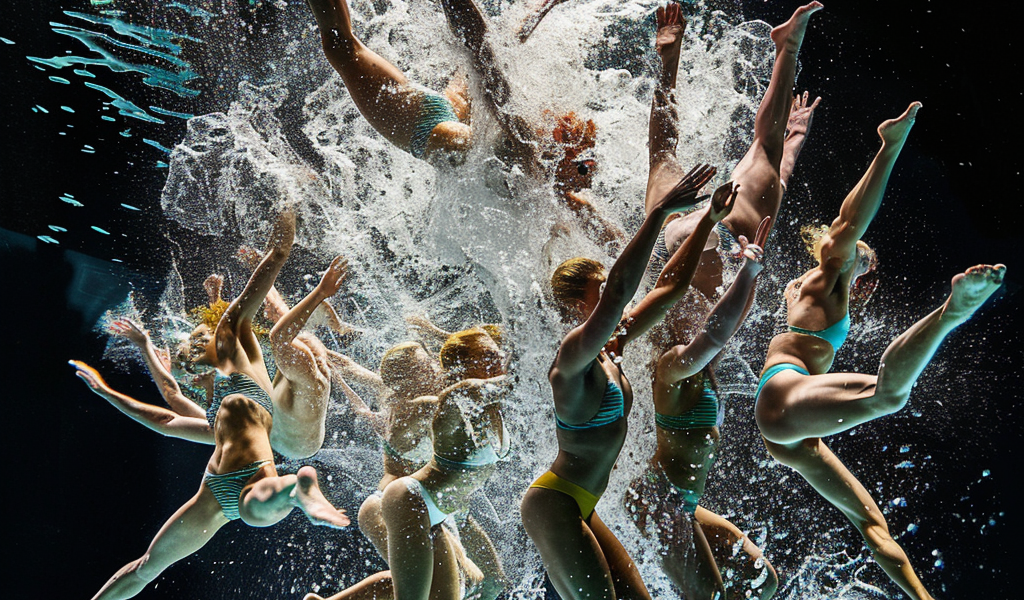As the countdown to the 2024 Summer Olympics in Paris continues, artistic swimming is undergoing a transformative phase that is reshaping the sport’s identity and pushing the boundaries of athleticism. Formerly known as synchronized swimming, this discipline has evolved significantly, showcasing more muscular athletes and increasingly daring maneuvers.
To excel as a U.S. Olympic artistic swimmer, athletes must possess a unique combination of endurance, strength, and grace. The rigorous training regimen includes daily seven-hour practices, where swimmers hone their skills in various techniques such as the eggbeater, flamingo, scull, and rocket split. These athletes also require exceptional breath control, flexibility, and the ability to perform under pressure, often resulting in physical challenges such as bruises and the occasional concussion.
For the first time in Olympic history, men were slated to compete in artistic swimming this year. This follows their participation in World Championships and lower-level competitions since 2015. However, despite the anticipation, the U.S. team announced a final roster that did not include any male athletes. William May, a 45-year-old swimmer from Santa Clara, California, was regarded as the world’s best male artistic swimmer and had been training with the U.S. team. Yet, he did not make the final cut, a decision that USA Artistic Swimming’s chief executive, Adam Andrasko, described with disappointment, acknowledging May’s extraordinary talent.
Andrasko noted that while the inclusion of men has generated significant media attention, a more pressing narrative is the evolution of artistic swimming itself. The sport’s increasing rigor and the risks associated with its new elements are capturing the attention of fans and athletes alike. Anita Alvarez, a 27-year-old member of the current U.S. team and a competitor at the Tokyo Games, highlighted the substantial changes in the sport since the last Summer Olympics. The complexity of the routines has escalated, with more intricate tricks and higher throws becoming the norm.
Today’s elite artistic swimmers are not only physically stronger but also exhibit a different aesthetic. The focus has shifted from traditional elements like waterproof mascara to showcasing lean muscle and athletic prowess. A new category, acrobatics, will be introduced at the Paris Olympics, where swimmers will lift and launch their teammates, known as fliers, into the air. These fliers will perform aerial maneuvers, twisting and flipping before plunging back into the water.
This evolution in artistic swimming reflects broader trends in sports, where athleticism and performance are increasingly prioritized. As the sport continues to develop, it challenges traditional perceptions and expands its appeal to a wider audience. The upcoming Olympics promise to be a thrilling showcase of this dynamic evolution, as athletes push the limits of what is possible in the water.
With the 2024 Summer Olympics on the horizon, the world of artistic swimming is poised for a significant transformation. As athletes prepare to compete at the highest level, the focus remains on innovation, athleticism, and the artistry that defines this captivating sport. Fans can anticipate a breathtaking display of talent and creativity, as the athletes redefine what it means to be an artistic swimmer in the modern age.





